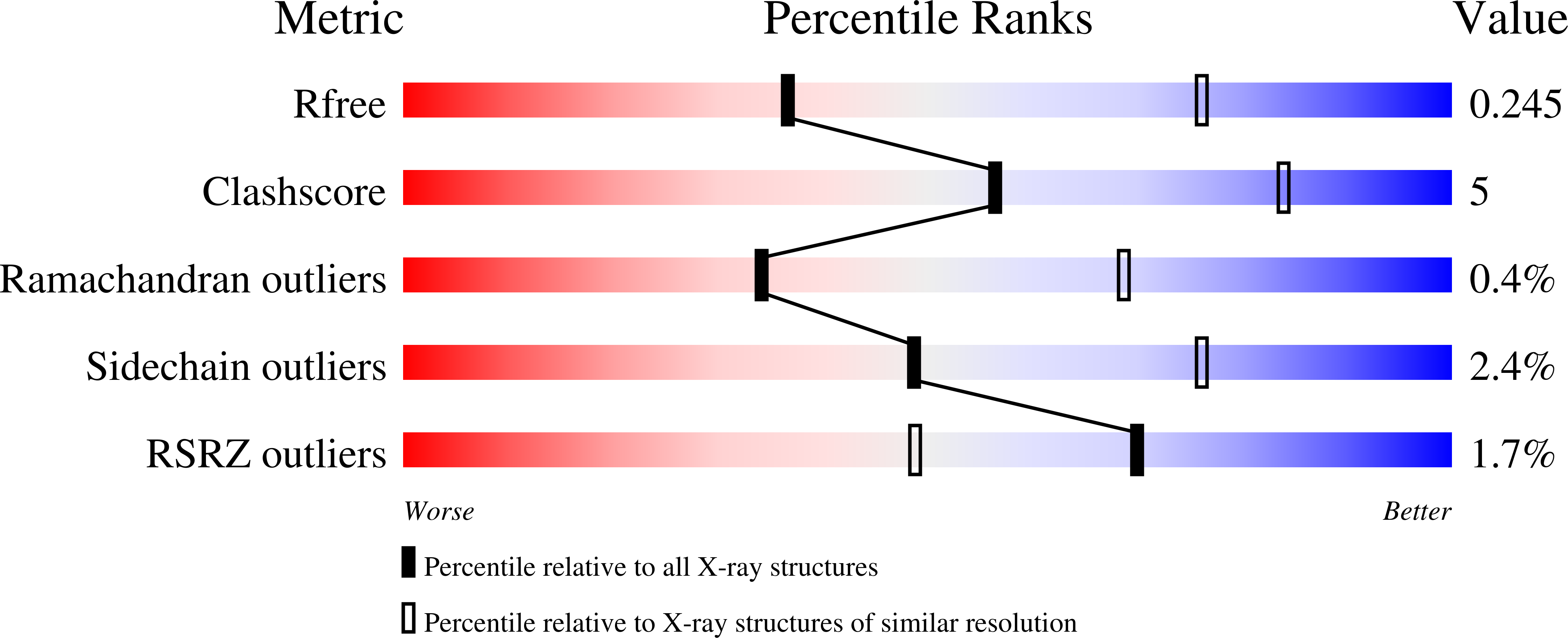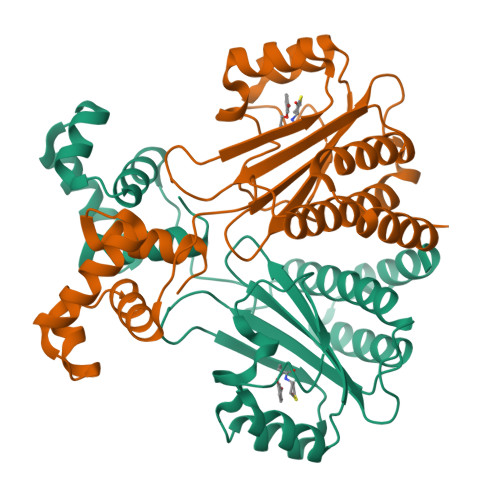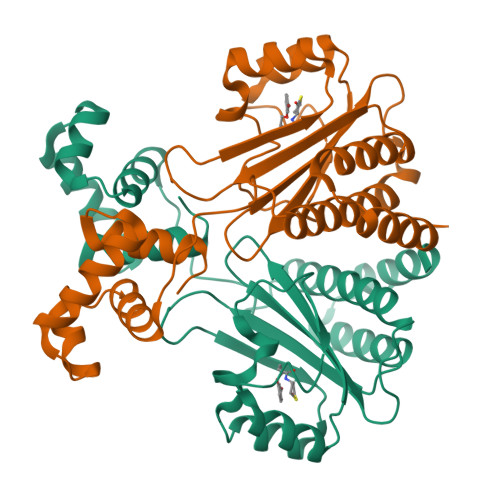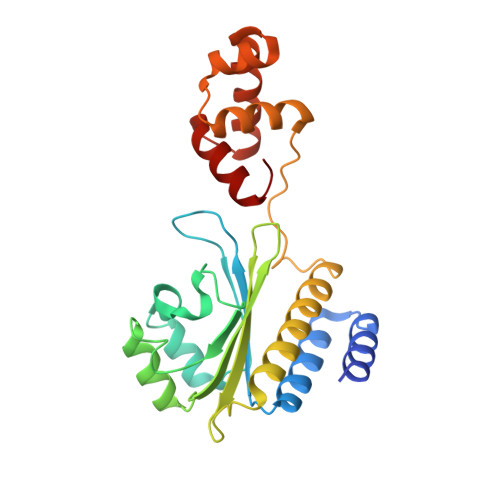Moonlighting chaperone activity of the enzyme PqsE contributes to RhlR-controlled virulence of Pseudomonas aeruginosa.
Borgert, S.R., Henke, S., Witzgall, F., Schmelz, S., Zur Lage, S., Hotop, S.K., Stephen, S., Lubken, D., Kruger, J., Gomez, N.O., van Ham, M., Jansch, L., Kalesse, M., Pich, A., Bronstrup, M., Haussler, S., Blankenfeldt, W.(2022) Nat Commun 13: 7402-7402
- PubMed: 36456567
- DOI: https://doi.org/10.1038/s41467-022-35030-w
- Primary Citation of Related Structures:
7R3E, 7R3F, 7R3G, 7R3H, 7R3I, 7R3J, 8B4A - PubMed Abstract:
Pseudomonas aeruginosa is a major cause of nosocomial infections and also leads to severe exacerbations in cystic fibrosis or chronic obstructive pulmonary disease. Three intertwined quorum sensing systems control virulence of P. aeruginosa, with the rhl circuit playing the leading role in late and chronic infections. The majority of traits controlled by rhl transcription factor RhlR depend on PqsE, a dispensable thioesterase in Pseudomonas Quinolone Signal (PQS) biosynthesis that interferes with RhlR through an enigmatic mechanism likely involving direct interaction of both proteins. Here we show that PqsE and RhlR form a 2:2 protein complex that, together with RhlR agonist N-butanoyl-L-homoserine lactone (C4-HSL), solubilizes RhlR and thereby renders the otherwise insoluble transcription factor active. We determine crystal structures of the complex and identify residues essential for the interaction. To corroborate the chaperone-like activity of PqsE, we design stability-optimized variants of RhlR that bypass the need for C4-HSL and PqsE in activating PqsE/RhlR-controlled processes of P. aeruginosa. Together, our data provide insight into the unique regulatory role of PqsE and lay groundwork for developing new P. aeruginosa-specific pharmaceuticals.
Organizational Affiliation:
Department Structure and Function of Proteins, Helmholtz Centre for Infection Research, Inhoffenstr. 7, 38124, Braunschweig, Germany.

















